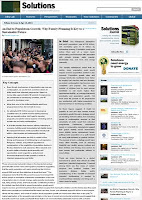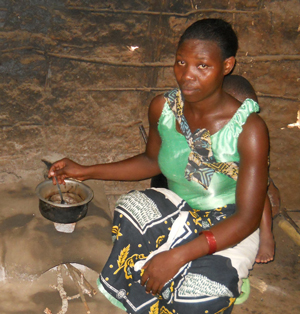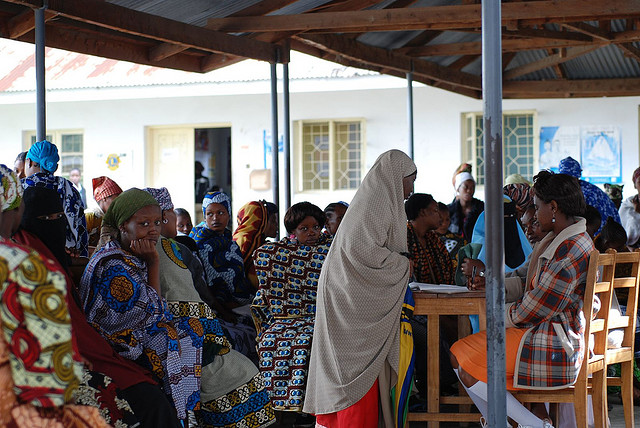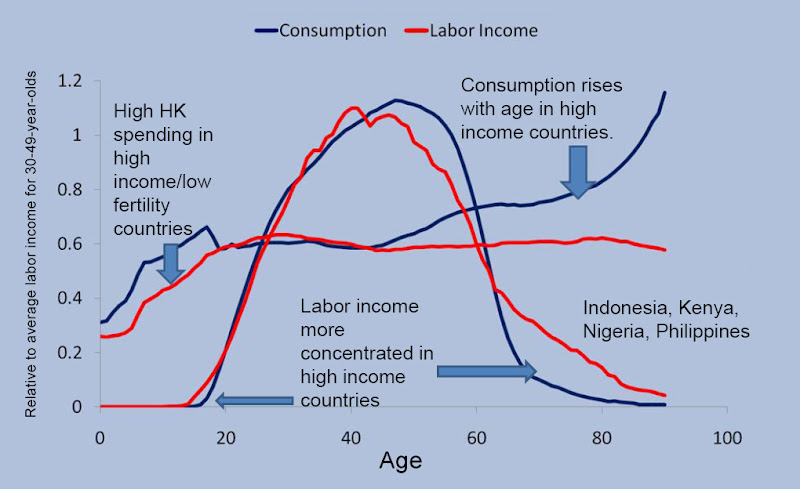-
Watch: Addressing the National Security Implications of U.S. Oil Dependency
›April 27, 2011 // By Schuyler NullBoth the civilian and military sectors have key roles to play in achieving energy security as the United States addresses the national security implications of its oil dependency. Yesterday, the White House hosted a forum with senior officials from both the public and private sector to highlight avenues toward achieving that security. Co-hosts Deputy Energy Secretary Daniel Poneman and Deputy Defense Secretary William Lynn were joined by Woodrow Wilson Center President Jane Harman, John Podesta of the Center for American Progress, and John Deutch of the Massachusetts Institute of Technology.
The panelists discussed ongoing cooperation between the Department of Energy and Department of Defense, and Harman in particular highlighted the power of the military to drive innovation and more efficient production of energy-efficient technologies.
“‘Energy security’…reminds us that important domestic energy developments have international consequences, and important international events have domestic consequences,” said Deutch, pointing out the linked, global nature of energy markets and climate change.
Deputy Secretary Lynn highlighted the tactical tactical benefits of reduced petroleum dependence with the example of a solar panel pilot program being conducted by the Marine Corps in Afghanistan:The regiment selected to try out the solar panels deployed to one of the most violent districts in Helmand province. The operational gains were immediate: Marines ran two patrol bases completely on solar power and cut diesel fuel consumption at a third base by over 90 percent. On one three-week foot patrol, flexible solar panels eliminated battery resupply needs entirely, ending supply drops that previously were required every 48 hours.
Watch the full forum above, and see also the recent National Conversation at the Woodrow Wilson Center that focused on “A New National Security Narrative.” -
Marissa Mommaerts, Aspen Institute
Aspen Institute: The Revolution We Need in Food Security and Population
›April 27, 2011 // By Wilson Center StaffThe first months of this year brought the second global food price crisis in just three years, with soaring food prices against a backdrop of bad weather, poor harvests, and political turmoil in North Africa and the Middle East. This year will see another milestone: the planet’s population is set to surpass seven billion, with most of the population growth occurring in countries least equipped to meet rising demands on agriculture and the environment. As part of its 7 Billion: Conversations that Matter roundtable series, the Aspen Institute’s Global Health and Development Program brought together three experts to discuss “The Revolution We Need in Food Security and Population” on April 12.
-
Population Growth and its Relation to Poverty, the Environment, and Human Rights
›“Population, Poverty, Environment, and Climate Dynamics in the Developing World,” in the Interdisciplinary Environmental Review, by Jason Bremner, David Lopez-Carr, Laurel Suter, and Jason Davis, attempts to illuminate and clarify the complex relationships between environmental degradation, population dynamics, and poverty. Population growth is a key driver for the degradation of ecosystem services which has a direct impact on livelihoods and human well-being, write the authors, especially for the poor. They argue that “population growth itself, however, remains an insufficient explanation of the relationship between population, ecosystems, and poverty.” While the field has a come a long way since its “original Malthusian roots,” they write, the relationships between these dynamics differ greatly depending on the area in question, and much work remains to be done on the less well-studied ecosystems.
In “An End to Population Growth: Why Family Planning Is Key to a Sustainable Future” from the Solutions Journal, Robert Engelman reminds us that population projections are not set in stone and that the widespread belief that population has to reach nine billion before leveling off is wrong. Nor is coercive “population control” necessary, he writes: “Population growth rates and average family size worldwide have fallen by roughly half over the past four decades, as modern contraception has become more accessible and popular.” Unfortunately, there remains a large number of people around the world without access to family planning, the majority of whom live in developing countries. Engelman points out that while the number of people of reproductive age has steadily increased in these countries over the last decade, donor support has declined. He argues that research, courage, and creativity are needed to reverse this situation, but in a world where most of all pregnancies were intended, population growth would slow long before reaching nine billion. -
Rukia Seif, PHE Champion
Making Life Easier in Rural Tanzania
›This PHE Champion profile was produced by the BALANCED Project.
Rukia Seif is a population, health, environment (PHE) peer educator who promotes simple economic, environmental, and health behaviors that make sense. In many ways, the Mkalamo village where Rukia lives is a typical rural Tanzanian agricultural village. In another important way it is very different. Mkalamo abuts the biodiversity rich Saadani National Park – the only wildlife park in Tanzania that borders the sea. Ironically, this park does not make life easier for people living in Mkalamo but more difficult. In the park, there is a ban on the cutting of wood, making it difficult to find enough to fuel villagers’ cooking stoves. Also, increasing numbers of the park’s wild animals often destroy the villagers’ precious crops.
As a PHE peer educator, Rukia talks with her fellow community members about simple things they can do to improve their lives. Her messages are clear:
Rukia sets a good example of how doing these simple things can improve a family’s life and protect the environment. At age 36, she is a mother of three girls, ages 14, 12, and one and a half. Rukia and her husband, Seif Ramadhani, are taking measures to plan their family. Rukia used pills before they decided to have their last daughter. Now they are using condoms as a back-up while Rukia is breastfeeding the baby. Through her work, Rukia meets and talks to many people every day. She discusses family planning and if someone is interested, she refers them to community-based distributors and the dispensary for family planning services.- By planning their families, women can ensure their own and their children’s health and can decide the optimal number of children that they can provide for.
- By using fuel efficient stoves, women can spend less time collecting fire wood, freeing up time for other chores or livelihood activities and reducing the amount of needed fuel, thus helping sustain the forests for future generations.
- By joining community-led savings and credit associations, women and men gain access to capital, allowing them to scale-up current livelihoods or diversify to new sources of income.
“I talk to my peers about planning their families so we have enough natural resources to meet the needs of the villagers who depend on these resources,” she said. “Also, when you plan your family, you will get more time to perform other activities.”
An active member of the savings and credit association, where she also acts as the accountant, Rukia is living proof of this last statement. Through savings and loans, Rukia has diversified her income by buying a sewing machine and a fuel-efficient oven. Today, she generates income from cow and poultry husbandry, tailoring, bread-making, selling soft drinks, and constructing fuel-efficient stoves. With this increased income, Rukia and her husband have been able to put an iron sheet roof on their house and send their first-born daughter to secondary school – a great achievement in a country where only five percent of women stay in school beyond the primary level.
Rukia demonstrated her two fuel-efficient stoves: one is a metal oven that she uses for baking breads and cakes, the other is a simple mud stove that she uses for cooking. The mud stove, which costs less than $2 to build, is getting increasingly popular in the community. It saves fuel wood, prevents fires, produces less smoke (a serious health hazard), and cooks the food faster!
“I can even wear my best clothes and put on some lip shine when I use this stove, because it does not foul up the air,” Rukia explains with a laugh. Seeing the benefits of the fuel efficient stoves, she has inspired ten community-based distributors and five village leaders to join the team of individuals showcasing the fuel efficient technologies.
Rukia is a perfect example of practicing what one preaches. She is improving her own life, helping others learn to do the same, and protecting the very natural resources upon which almost everyone in Mkalamo depends.
This PHE Champion profile was produced by the BALANCED Project. A PDF version can be downloaded from the PHE Toolkit. PHE Champion profiles highlight people working on the ground to improve health and conservation in areas where biodiversity is critically endangered. -
Overcoming Pakistan’s Demographic Challenges
›Download Reaping the Divided: Overcoming Pakistan’s Demographic Challenges from the Wilson Center. Excerpted below is the introductory essay, “Pakistan’s Demographics: Possibilities, Perils, and Prescriptions,” by Michael Kugelman.
On July 11, 2010, Pakistani Prime Minister Yousaf Raza Gilani delivered a speech in Islamabad to commemorate World Population Day. He announced that in order to highlight the crucial connection between demographics and economic growth, 2011 would be designated “Population Year” in Pakistan. “All hopes of development and economic prosperity would flounder if we as a nation lose the focus and do not keep [the] population issue in the spotlight,” he declared.
Hopefully that spotlight comes with a long shelf life. Pakistan faces acute population challenges. If they are to be overcome, they will need to be illuminated for far more than a year.
Yet, there are exciting opportunities here as well. A long-term approach to managing the challenges presented by Pakistan’s burgeoning population, if accompanied by effective policies and sustained implementation, could spark a monumental transformation: one that enables the country to harness the great promise of a large population that has usually been viewed as a hindrance to prosperity. Indeed, demographers contend that Pakistan’s young, growing, and rapidly urbanizing population can potentially bring great benefits to the country. If birth rates fall substantially, and if young Pakistanis are properly educated and successfully absorbed into the labor force, then the nation could reap a “demographic dividend” that sparks economic growth, boosts social well-being, and promotes the rejuvenation of Pakistan.
The Young and the Rising
Because Pakistan has not conducted a census since 1998, estimating the country’s total population size is a highly inexact science. The Pakistani government lists the current figure at about 175 million people, while the United Nations believes the number is closer to 185 million. However, while the precise figure may be in doubt, the population’s rapid rise is not. Though no longer increasing at the 3 percent-plus rate seen in the 1980s, Pakistan’s population is still growing at a 2 percent pace. According to the UN Population Division’s latest mid-range demographic projections, released in 2009, the population will rise to 335 million by 2050. More than 60 million people are expected to be added in just the next 15 years.
This explosive increase, however, merely represents the best-case scenario, and will prevail only if the country’s fertility rates drop from the current average of about four children per woman to two. Should fertility rates remain constant, the UN estimates the population could exceed 450 million by 2050, with a total population of nearly 300 million as early as 2030.
Pakistan’s population is not only large and growing, but also very young, with a median age of 21. Currently, two-thirds of Pakistanis are less than 30 years old. As a percentage of total population, only Yemen has more people under the age of 24. Additionally, given that more than a third of Pakistanis are now 14 years old or younger, the country’s population promises to remain youthful over the next few decades. In the 2020s, the 15-to-24 age bracket is expected to swell by 20 percent. Pakistan’s under-24 population will still be in the majority come 2030. And as late as 2050, the median age is expected to be only 33.
Pakistan’s demographic profile contrasts with what is happening in much of the rest of the world. Sub-replacement level fertility rates (about two births per woman) prevail not only throughout the developed world, but also across much of Southeast Asia, the Middle East, and Latin America. As one commentator has noted, “the twenty-first century’s hallmark [demographic] trend appears to be a fertility implosion.” South Asia, along with sub-Saharan Africa, is one of the last regional bastions of youthful, rapidly proliferating populations. Yet even within South Asia, Pakistan stands out. Excluding Afghanistan, of all the member states of the South Asian Association for Regional Cooperation – Bangladesh, Bhutan, India, Maldives, Nepal, and Sri Lanka – Pakistan has the highest population growth, birth, and fertility rates; the youngest median age (tied with Nepal); and the largest percentage of people 14 years old or younger.
Continue reading “Pakistan’s Demographics: Possibilities, Perils, and Prescriptions,” or download the full report from the Wilson Center.
Michael Kugelman is a program associate with the Asia Program. -
Is Universal Access to Family Planning a Realistic Goal for Sub-Saharan Africa?
›“What do we require to ensure universal access to family planning services that are appropriate, affordable, accessible, and of good quality?” asked Michael Mbizvo, director of the Department of Reproductive Health and Research at the World Health Organization at the Wilson Center last month. [Video Below]
To talk about this difficult question and present research and programmatic evidence for sub-Saharan Africa, Mbizvo was joined by panelists Fred Makumbi, senior lecturer and head of the Department of Epidemiology and Biostatistics at Makerere University, Uganda; Oladosu Ojengbede, director of the Center for Population and Reproductive Health, University of Ibadan, Nigeria; and Frank Taulo, director of the Center for Reproductive Health and senior lecturer of obstetrics and gynecology at the University of Malawi.
Integrating Family Planning and HIV Services
Makumbi shared a number of findings on fertility preferences, behaviors, and contraceptive uptake in the context of HIV infection and care in Uganda. “Integrating family planning services into HIV services could help address the family planning needs of both HIV infected and uninfected,” he said.
According to new research conducted as part of the Rakai Community Cohort Study, despite significant gains in family planning use over time, there is still a high unmet need for contraception, irrespective of HIV status, in the Rakai district of central Uganda, said Makumbi. Male partner’s fertility desires were found to play an important role in pregnancy rates, and compared with previous studies conducted in the Rakai district, researchers saw an increase in pregnancy incidence and prevalence among HIV positive women, especially those on anti-retroviral therapy. HIV care that included voluntary counseling and testing was associated with significant increases in the use of family planning, and in particular, the use of condoms.
To effectively promote universal family planning in sub-Saharan Africa, “there is a need to strengthen family planning services in HIV care programs, with promotion of modern contraceptive methods, and with particular attention to women on anti-retroviral therapy,” said Makumbi. “Strategies to address desire for high fertility need to be developed, especially with regard to male involvement,” he added.
Multi-Pronged Approach to Universal Family Planning
“Family planning success in sub-Saharan Africa is a must for the region’s sustainable development,” said Ojengbede. “Poor commitment to women’s health in sub-Saharan Africa” has not only resulted in high fertility rates and poor maternal health indices but has also negatively impacted economic and human development in the region, said Ojenbede.
To increase access to and use of family planning, Ojengbede stressed the need to generate and sustain government commitment, promote legislation to support women’s autonomy, and implement policies to improve access to quality reproductive health services.
At the community level, Ojengbede said, the public health community must work to integrate family planning services into all reproductive health programs, including prevention of mother to child transmission; accelerate female empowerment programs; actively engage males in family planning access and uptake; and address social and cultural barriers that prevent widespread adoption of family planning.
“Traditional rulers can occupy a critical position to enact positive change in their communities and at the national level,” said Ojengbede. In Nigeria, for example, providing education about the health and economic benefits of family planning has helped traditional leaders embrace family planning and develop their own strategies to promote birth spacing in their communities.
“Universal family planning access must be achieved through a multi-pronged approach that should be colored with socio-cultural sensitivity, solid evidence, and sustainability,” concluded Ojengbede.
Eliminating Unmet Need: “Yes, We Can”
“It is time to prioritize issues that are affecting women and family planning is a very critical area,” said Taulo.
There are still many challenges to overcome before Malawi can achieve universal family planning access, including poverty, misconceptions and myths about family planning, lack of availability of reproductive health supplies, poor infrastructure, shortage of trained professionals, and religious and cultural barriers.
“Commodities are also very much dependent on the donor,” said Taulo, pointing to the challenges of insufficient funding and political will. “Failure to connect family planning to economic development and political stability is one of the main areas that we are struggling with,” he added.
“We have lots of challenges, but also many achievements,” said Taulo. Malawi has made important strides in expanding access to family planning by implementing community-based strategies and youth-friendly programs, developing public-private partnerships, engaging policymakers and traditional leaders, and encouraging media coverage of family planning issues.
“Education is another family planning product,” said Taulo. Moving forward, a “deliberate focus on girl child education” and promotion of women’s welfare can have a major impact on fertility reduction, he said.
“We can eliminate unmet need for family planning in Malawi, if we put our heads together, our thoughts together, and our energy together,” concluded Taulo.
Source: World Health Organization.
Image Credit: “Women’s Health Clinic” courtesy of flickr user advencap. -
Dividend or Deficit? The Economic Effects of Population Age Structure
›According to the latest projections, the global population will hit the seven billion mark later this year and perhaps nine billion by 2050. Yet, while the global population is growing, it is also aging, due to falling fertility rates and longer life expectancies. By 2050 the number of people aged 60 and over will reach two billion. At an event at the Wilson Center on April 1, Andrew Mason of the University of Hawaii at Manoa and the East-West Center and Ronald Lee of the University of California, Berkeley, discussed their research on the economic effects of an aging world with discussant Dalmer Hoskins of the Social Security Administration. [Video Below]
Changing Age Structures and Economic LifecyclesThere are three phases of age transition, Mason explained: during the first phase, high fertility rates and declining infant and child mortality rates increase the share of children in the population. In the second phase, the proportion of the working age population (those aged 15-64) increases, potentially providing a boost to production and consumption, and in the third phase, the elderly proportion increases due to lower fertility rates, decreasing production and increasing the burden on state support systems.
From 2010-2015, 85 countries are projected to witness the largest absolute increase in history of their populations aged 60 and over. This increase in elder populations is significant, Mason said, because it may mean slower economic growth.
Based on data collected through National Transfer Accounts, Mason and Lee’s economic lifecycle tracks the labor income and consumption rates of a population at a given age. In high income countries, consumption increases around the teen years as a result of investments in education, then dips slightly, and, finally, sharply rises around the age of 80 due to high health care expenditures. The consumption rate remains relatively flat in low income countries, with consumption differing the most in the older ages.
The support ratio measures the number of workers relative to the number of consumers, while taking into account age-specific variances in number of hours worked and level of consumption. Mason explained that China, after four decades of rapid growth, has reached the peak of its support ratio, with many workers relative to the number of consumers. However, China is rapidly aging, like much of Northeast Asia, and also because of its one-child policy. The resulting decline in its support ratio will likely limit its economic growth; however, Mason cautioned that it would be “rash” to say that its growth will bottom out completely.
The United States has an age structure that is “quite a bit more favorable” than other industrial countries, Mason said. Higher fertility, lower life expectancy, and a higher rate of immigration mean that aging is coming more slowly to the United States than other developed countries.
The Second Demographic Dividend: An Investment Opportunity
During the first demographic dividend, the labor force grows more rapidly than the dependent population, thus allowing more resources to be spent on economic growth. But what happens after that? As populations age, there is a “semi-automatic” increase in investment in human, physical, or financial capital, Lee explained; for example, as fertility falls, the amount invested per child increases. This second demographic dividend, said Lee, can help somewhat offset the decline in support ratio that comes in the third phase of the age transition – aging.
One response to the increased costs of an aging population, said Lee, is to reduce consumption in proportion to the decline in the support ratio. Another option would be adding more hours to the work day or pushing the retirement age back. In the United States, Lee said that to offset the declining support ratio entirely by postponing retirement would require postponement by eight years up to 2050, and 10 years by 2085.
Brazil, Lee said, is the “world champion” of pension generosity, where pensions make up 12 percent of the GDP. The United States, by contrast, relies on asset income from physical or financial investments for about two-thirds of its retirement income. Brazil’s challenge, when it begins to feel the effects of aging (it is still relatively young), will therefore be much greater than in the United States.
A “New Lens” on Aging
Aging, Hoskins said, is not the “catastrophe” that it has been portrayed to be in the media. Supporting an aging population is “something we can plan for and handle,” he said. It is possible “to do the right thing to make sure citizens have a decent life.” The problems come when a country waits too long or does not plan at all, such as in Nigeria and the Philippines where, Hoskins said, they have very underdeveloped social protection systems and the elderly have little to no income. Mason and Lee’s analysis of the work/consumption ratio, said Hoskins, offers a “new lens” into how the world will deal with aging.
Sources: Los Angeles Times, National Transfer Accounts, UNFPA, World Bank.
Image Credits: “Elderly couple – Meiji-jingu,” courtesy of flickr user Tom Spender. Chart courtesy of Ronald Lee and Andrew Mason, National Transfer Accounts. -
Watch: Frederick Burkle on Lessons from Haiti and Professionalizing Humanitarian Assistance
›April 20, 2011 // By Schuyler Null“Haiti – in terms of coordination – was a debacle,” said Frederick Burkle, senior fellow with the Harvard Humanitarian Initiative and a visiting scientist at the Harvard School of Public Health. Burkle, who is also a senior public policy scholar at the Wilson Center, said that after the 2010 earthquake, “the large majority of people who showed up were under the age of 30 and this was their first disaster event.”
As a result, “best practices did not necessarily occur,” Burkle said. “Ninety-five percent of the work is probably done by 45 of the major NGOs,” but, he said, the number of “mom-and-pop shows” and other small NGOs in “The Republic of NGOs” is in the thousands.
Non-healthcare providers ended up providing services that they were not trained to provide – even amputations, Burkle said. “We certainly relish the humanitarian spirit of those who show up, but we have to have some coordination to ensure that best practices occur and that it goes in the right direction.”
“The professionalization blueprint really calls for courses, curriculum, and best practice standards,” said Burkle. The Harvard Humanitarian Initiative is working with the UN Office for the Coordination of Humanitarian Affairs, World Health Organization, and others to provide these resources.
“There’s a movement afoot within the humanitarian community itself to finally professionalize the humanitarian profession,” Burkle said, spurred on, in part, by the poorly coordinated responses to events like the Haiti earthquake.
 A Publication of the Stimson Center.
A Publication of the Stimson Center.









